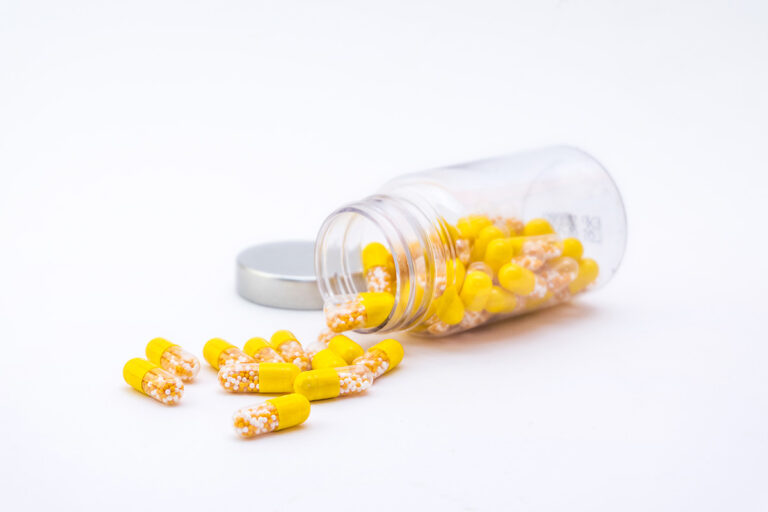What is saw palmetto?
Saw palmetto, also commonly known as Serenoa repens or American dwarf palm tree, is a plant native to the southeastern regions of the United States. (4) The medicinal part of the saw palmetto plant is its maroon colored, oblong shaped berry. Saw palmetto extract is composed of fatty acids and phytosterols that are responsible for its anti-inflammatory and anti-oxidant effects. (8)(10)(12) In addition, these components assist in inhibiting 5-alpha reductase, an enzyme that converts the hormone testosterone into the hormone dihydrotestosterone (DHT). (13) As a dietary supplement, saw palmetto can be obtained in many different forms, including whole dried berries, capsules, soft gels, tablets, topical creams, tinctures, and powders. It is recommended to look for saw palmetto products that contain plant sterols and 80% to 90% fatty acids. (10)(13)Saw palmetto benefits and uses
Outlined below are common saw palmetto health benefits.Promotes a healthy urinary tract and prostate
Saw palmetto has been widely used by men with prostatic conditions, such as benign prostatic hyperplasia (BPH), a condition caused by a non-malignant enlargement of the prostate that can reduce or inhibit the flow of urine from the bladder. (4)(6) By inhibiting the 5-alpha reductase enzyme, saw palmetto may slow or prevent the growth of the prostate gland and promote healthy urine flow through the urinary tract, which reduces the occurrence of urinary tract symptoms in men and supports a healthy prostate. (3)(4)(10)(13) A nine week study showed that men who received saw palmetto supplementation demonstrated a decrease in urinary tract symptoms and an increase in urine flow when compared to a placebo. (16)Supports healthy hormone levels in women with PCOS
Testosterone is an androgen hormone necessary for numerous body functions, including growth and reproduction. Testosterone levels in women vary throughout their menstrual cycles and life stages. While testosterone is essential for both men and women, excess testosterone levels can lead to harmful health effects. (7) Research has shown that saw palmetto acts as an anti-androgen, also known as a testosterone blocker. Therefore, this medicinal herb may help relieve symptoms associated with polycystic ovarian syndrome (PCOS), a condition characterized by elevated testosterone levels, irregular or absent menstrual cycles, infertility, acne, hirsutism, cardiac disease, and insulin resistance. (5)(6)(9) However, further controlled trials are needed to confirm this possible application.Did you know? PCOS affects approximately 10% of females in North America. (9)
May prevent hair loss
Saw palmetto may prevent hair loss and improve quality of hair growth in individuals with androgenic alopecia (AGA), a type of hair loss due to high levels of DHT. (10)(17) One study of ten males between the ages of 23 to 64 with mild to moderate AGA examined the effects of oral saw palmetto supplementation on hair growth. At the concluding visit, six out of the ten males demonstrated improved rates of hair growth. (15)
May decrease inflammation
Saw palmetto demonstrates anti-inflammatory properties and contains the anti-oxidant compounds epicatechin and methyl gallate. These compounds may prevent damage to healthy cells, protect against chronic disease, and reduce levels of inflammation in the body. (1)(8)(12)(14) Although more research in humans is needed, some animal studies have demonstrated the anti-inflammatory effects of saw palmetto. One animal study found that saw palmetto decreased levels of the inflammatory marker IL-6 in mice. (2)
Is saw palmetto safe?
Saw palmetto has been shown to be safe for the majority of healthy individuals; however, mild headaches and digestive side effects have been reported. (10)(11) Saw palmetto has not been shown to interact with other medication. (11) In addition, saw palmetto may be contraindicated for certain people. Specifically, research states it may be unsafe to supplement with saw palmetto during pregnancy or breastfeeding. (11)The bottom line
Supplementing with saw palmetto has been shown to promote urinary tract and prostate health, prevent hair loss, improve quality of hair growth, balance hormones, and provide anti-inflammatory and anti-oxidant benefits. If you’re a patient and feel that you may benefit from supplementing with saw palmetto, consult with your healthcare practitioner to see if it’s right for you.- Abdel Bar, F. M. (2014). New chalcanonol glycoside from the seeds of saw palmetto: antiproliferative and antioxidant effects. Natural Product Research, 29(10), 926–932.
- Bernichtein, S., Pigat, N., Camparo, P., Latil, A., Viltard, M., Friedlander, G., & Goffin, V. (2015). Anti-inflammatory properties of lipidosterolic extract of serenoa repens (Permixon®) in a mouse model of prostate hyperplasia. The Prostate, 75(7), 706–722.
- Chittur, S., Parr, B., & Marcovici, G. (2011). Inhibition of inflammatory gene expression in keratinocytes using a composition containing carnitine, thioctic acid and saw palmetto extract. Evidence-Based Complementary and Alternative Medicine, 2011, 1–7.
- Fagelman, E., & Lower, F. C. (2001). Saw palmetto berry as a treatment for BPH. Reviews in Urology, 3(3), 134–138.
- Grant, P., & Ramasamy, S. (2012). An update on plant derived anti-androgens. International Journal of Endocrinology and Metabolism, 10(2), 497–502.
- Institute of Medicine (US) and National Research Council (US) Committee on the Framework for Evaluating the Safety of Dietary Supplements. Dietary Supplements: A Framework for Evaluating Safety. Washington (DC): National Academies Press (US); 2005. Appendix K, Prototype Focused Monograph: Review of Antiandrogenic Risks of Saw Palmetto Ingestion by Women. Available from: https://www.ncbi.nlm.nih.gov/books/NBK216069/
- Islam, R. M., Bell, R. J., Green, S., & Davis, S. R. (2019). Effects of testosterone therapy for women: A systematic review and meta-analysis protocol. Systematic Reviews, 8(1), 1.
- Kwon, Y. (2019). Use of saw palmetto (Serenoa repens) extract for benign prostatic hyperplasia. Food Science and Biotechnology, 28(6), 1599–1606.
- Liepa, G. U., Sengupta, A., & Karsies, D. (2008). Polycystic Ovary Syndrome (PCOS) and other androgen excess–related conditions: Can changes in dietary intake make a difference? Nutrition in Clinical Practice, 23(1), 63–71.
- Murugusundram, S. (2009). Serenoa repens: Does it have any role in the management of androgenetic alopecia? Journal of Cutaneous and Aesthetic Surgery, 2(1), 31–32.
- National Institutes of Health. (2020, May). Saw Palmetto. NCCIH. https://www.nccih.nih.gov/health/saw-palmetto
- Paulis, G. (2018). Inflammatory mechanisms and oxidative stress in prostatitis: The possible role of antioxidant therapy. Research and Reports in Urology, Volume 10, 75–87.
- Penugonda, K., & Lindshield, B. (2013). Fatty acid and phytosterol content of commercial saw palmetto supplements. Nutrients, 5(9), 3617–3633.
- Pham-Huy, L. A., He, H., & Pham-Huy, C. (2008). Free Radicals, antioxidants in disease and health. International Journal of Biomedical Science, 4(2), 89–96.
- Prager, N., Bickett, K., French, N., & Marcovici, G. (2002). A randomized, double-blind, placebo-controlled trial to determine the effectiveness of botanically derived inhibitors of 5-α-reductase in the treatment of androgenetic alopecia. The Journal of Alternative and Complementary Medicine, 8(2), 143–152.
- Wilt, T. J., Ishani, A., Stark, G., MacDonald, R., Lau, J., & Mulrow, C. (1998). Saw palmetto extracts for treatment of benign prostatic hyperplasia. JAMA, 280(18), 1604–1609.
- Zgonc Škulj, A., Poljšak, N., Kočevar Glavač, N., & Kreft, S. (2019). Herbal preparations for the treatment of hair loss. Archives of Dermatological Research, 312(6), 395–406.





